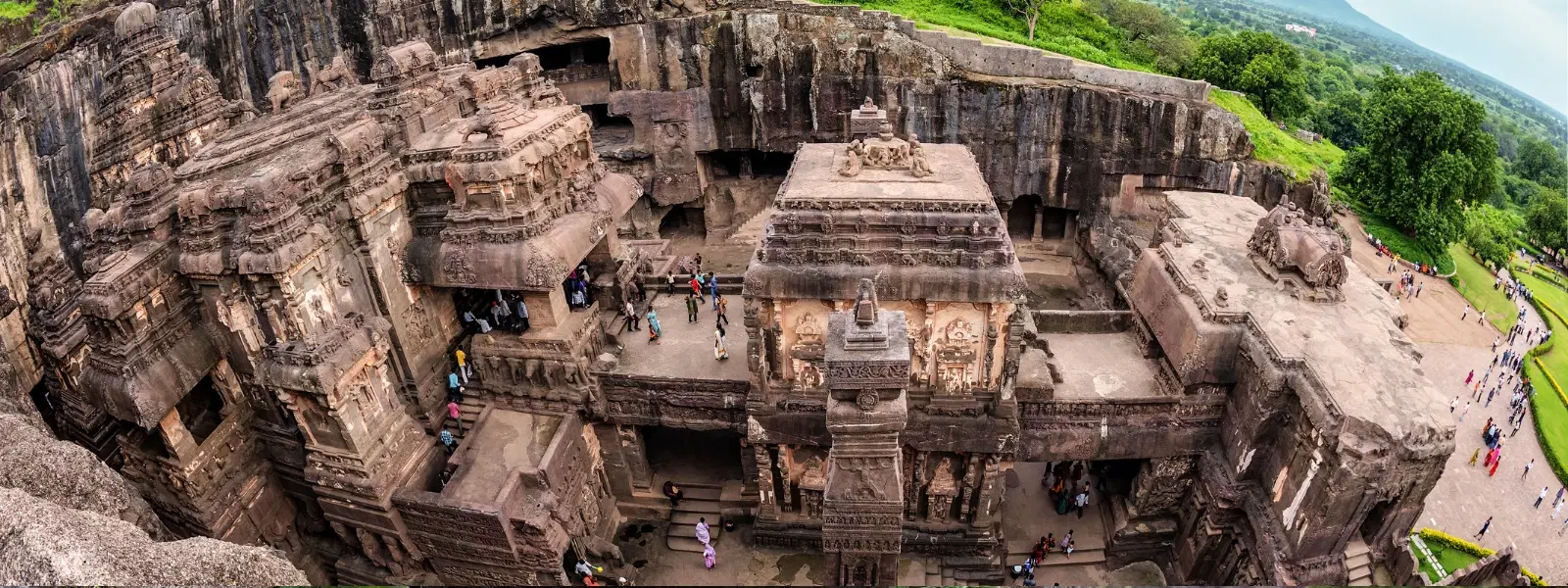
Flights
•04 min read

India's ancient rock art is much more than decorative engravings on stone; it is a timeless window into the human spirit. These captivating artworks provide us with clues about prehistoric life, beliefs, and cultural traditions. In this journey, you'll explore 10 must-see sites that reveal the secrets behind these enduring masterpieces, including prehistoric rock carvings, Indian cave paintings, and tribal rock art that continue to fascinate visitors from around the globe.
Ancient rock art in India includes petroglyphs, murals, engravings, and carvings that early humans etched onto stone. These expressions were created long before the advent of modern civilization and help us understand the daily lives, rituals, and beliefs of our ancestors. Often found in remote and rugged landscapes, these inscriptions are a direct link to the spiritual and cultural past of early man.
Rock art in India is a reflection of age-old beliefs and cultural practices. It tells stories of ancient rituals, heroism, and the natural world. Indigenous and tribal communities have preserved their traditions through these artworks, which offer a vivid glimpse into how early societies interpreted life and nature. These artistic expressions continue to be a source of pride and identity for many local cultures.
The diverse range of rock art in India consists of prehistoric rock carvings, stone age art in India, and tribal rock art. These forms are predominantly found in regions such as central India, the Western Ghats, and several isolated pockets scattered across the country, each offering a unique style and perspective on early human creativity.
Bhimbetka is a UNESCO World Heritage Site that stands as a monumental archive of ancient rock art. The site features Paleolithic and Mesolithic paintings, vividly depicting hunters, animals, and ritualistic scenes. This spectacular blend of prehistoric rock carvings and tribal rock art India offers a glimpse into a bygone era of human evolution.
The Ajanta Caves are renowned for their ancient Indian murals and Buddhist frescoes. These sacred spaces not only showcase religious themes but also demonstrate the exquisite craftsmanship of early artists. The detailed depictions offer insights into the spiritual beliefs and artistic techniques that influenced Indian cave paintings across centuries.
Like its counterpart, the Ellora Caves boast intricate carvings and murals that reflect the confluence of Hindu, Buddhist, and Jain traditions. The varied themes and expertly crafted stone art provide visitors with an immersive experience into the religious and cultural tapestry of ancient India.

Nestled in the foothills of Uttarakhand, Lakhudiyar features rock paintings that are both mysterious and mesmerizing. The prehistoric art here displays images of animals, humans, and abstract symbols, making it one of the most evocative examples of stone age art in India.
The Jogimara Caves offer a deep dive into tribal rock art, with inscriptions that date back to around 1000 BCE. These markings are a testament to the ingenuity and cultural continuity of early communities, providing a raw and authentic connection to their traditions.
Mangar Bani is a lesser-known yet equally intriguing site that showcases petroglyphs and engravings deeply linked to indigenous traditions. Its raw and unfiltered aesthetic makes it a favorite among those passionate about historical rock engravings and traditional Indian rock art.
Karnataka's Kupgal site is famous for stone carvings that narrate tales of tribal communities. These petroglyphs in India reveal insights into ancient lifestyles and environmental interactions, all etched into stone over countless generations.
The Edakkal Caves are renowned for their historic rock engravings, which have been crucial in understanding early trade and communication networks in the region. The clues found in these inscriptions weave together the threads of cultural exchange and local history.
This site is celebrated for its traditional Indian rock art and vividly colored murals that depict Jain themes. The artistic precision and attention to detail in these cave paintings provide an inspiring look into the religious narratives of ancient communities.
Odisha’s Ratangiri features prehistoric carvings that are intertwined with the early settlements of human civilization. As one of the hidden gems of archaeological rock art sites, Ratangiri offers a serene yet profound reflection on humanity's deep past.
Ancient artists relied on simple yet effective techniques to create rock art. They used natural tools such as stone chisels and abrasives along with pigments derived from minerals, charcoal, and plant-based materials. These methods produced robust and enduring murals and carvings that have withstood the test of time.

Despite their resilience, these archaeological rock art sites face challenges from natural weathering and human interference. Efforts to preserve these treasures include careful conservation practices and governmental protection. Ongoing work is critical to ensure that such indigenous rock art continues to tell its story to future generations.
Expert Tip: Bhimbetka Rock Shelters are not only a treasure trove of prehistoric art but also provide evidence of continuous human habitation for over 100,000 years. Visiting these shelters is like stepping into the cradle of human civilization.
Indian rock art is commonly referred to as petroglyphs, cave paintings, murals, or engravings, depending on the form and technique used.
The Bhimbetka Rock Shelters in Madhya Pradesh are considered the most famous site, recognized as a UNESCO World Heritage Site for their extensive prehistoric art.
Many cave paintings in India date back to the Paleolithic and Mesolithic periods, making them over 10,000 years old.
Ancient Indian murals were created using natural pigments derived from minerals, charcoal, and plant-based materials.
Yes, tribal rock art often reflects indigenous traditions, rituals, and daily life, showcasing the cultural heritage of early communities.
India's ancient rock art sites are a testament to the creativity, spirituality, and resilience of early humans. From the awe-inspiring prehistoric carvings of Bhimbetka to the vibrant Jain murals of Sittanavasal, these locations provide a remarkable insight into the rich cultural and artistic heritage of the subcontinent. Exploring these sites deepens our understanding of human evolution and reinforces the necessity of preserving these invaluable treasures for generations to come.